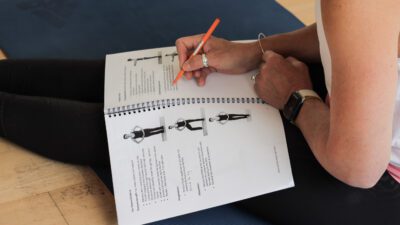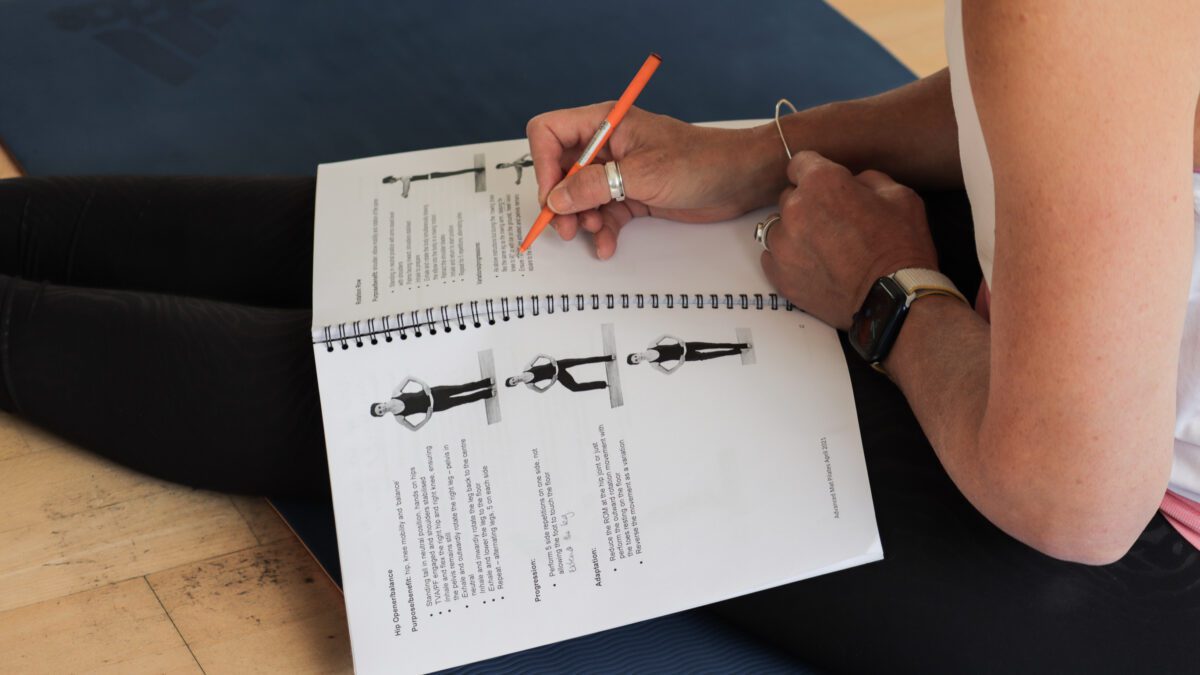



It is very difficult for us to see our posture and alignment when exercising or performing everyday activities, so this is where Pilates can help. This is important because if the activity is not performed in good alignment, it may result in injury.
Maintaining good or ideal posture can be difficult for people who sit incorrectly at computers all day or for those who stand incorrectly at work for long periods of time. In addition children (mainly teenagers) often spend hours sitting down and playing computer games. Sitting or standing poorly for prolonged periods can lead to lots of problems such as misalignment of the spine and other joints which can cause pain and imbalances, which in turn can lead to other joint pain.
It’s important to try and achieve ‘ideal’ posture, or as close to it as possible, when standing, sitting, lying, kneeling and so on. The movements need to be performed in the correct position to ensure all the joints, muscles and other body parts are in good alignment. If they’re not, muscles can become overstretched or tense which in turn can pull bones and joints out of alignment for long periods. Over the years this could turn the perfect posture you had as a young child into a ‘poor’ posture as an adult.
Pilates instructors play an important part in helping people feel better about themselves by effectively teaching them Pilates exercises to become more flexible, taller, stronger and leaner, which in turn improves posture when performing everyday activities.
One way of helping participants understand and see in their mind’s eye what the exercise should look or feel like is by effective imagery or visualisations. Using imagery also helps participants or clients become more aware of what their body is doing. For example, when teaching a class an exercise, one of my constant coaching points and imagery cues is “tuck the chin down slightly and shoulders down away from the ears; imagine your neck is long like a swan’s neck”. Many people then relax their shoulders and they often say “I didn’t even realise my shoulders were raised or my chin was lifted”. This is common and can cause tension is the upper back muscles and neck, which can cause tension headaches, neck ache and so on.
The following are examples of using imagery and visuals in Pilates classes:
Unfortunately, some people are born with spinal conditions which cannot be fixed just by exercising in the correct alignment. However, by performing Pilates and other exercises/activities these people can feel improvements and in turn feel better in themselves.
Although we are natural imagers, this may not be as effective as it used to be due to the influences of television, computer games and adverts being placed on billboards and shop windows. So turning on the ‘mind’s eye’ or ‘inner screen’ can be hard work and may seem rather unexciting compared with other images that are around us every day. However, there are definitely benefits to using imagery and visualisation in a Pilates class setting.
Learn more about posture and start your Pilates journey with our Level 3 Diploma in Mat Pilates